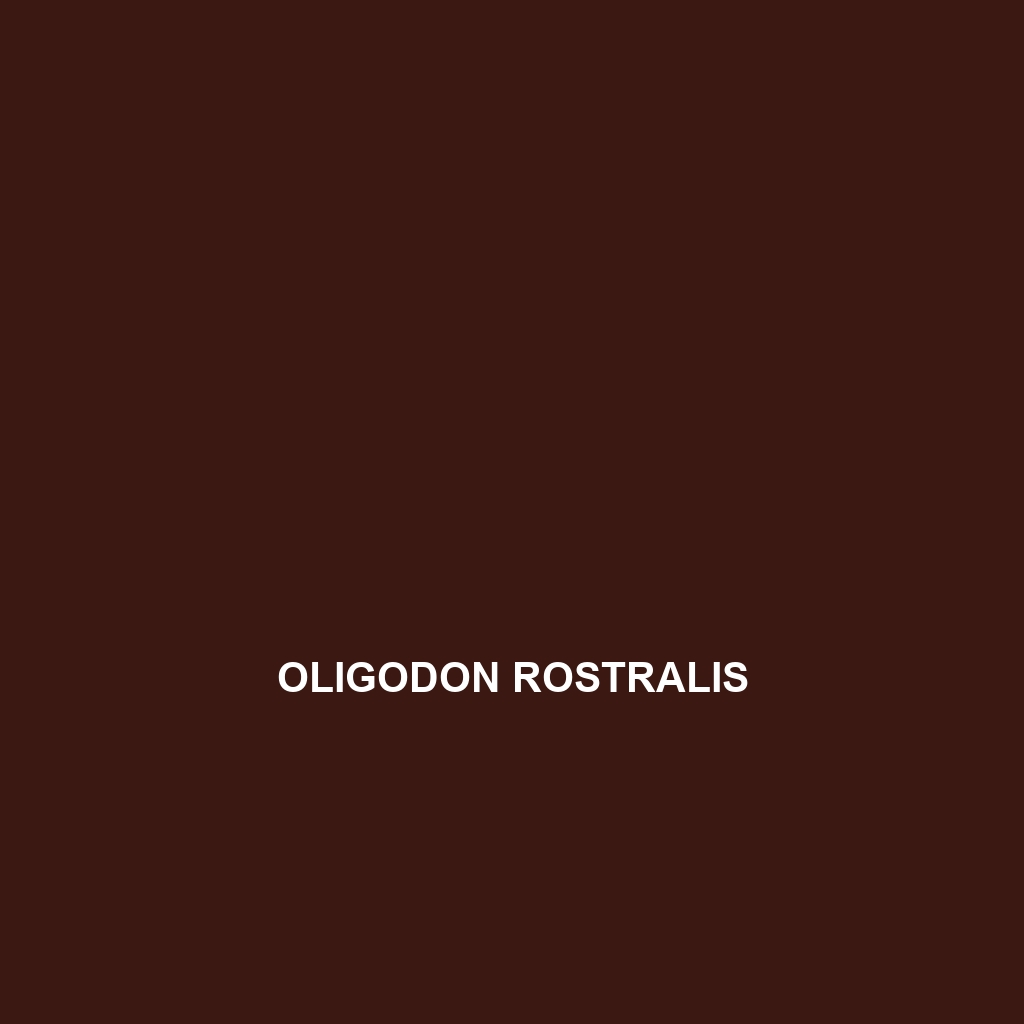Common Name
Oligodon rostralis
Scientific Name
Oligodon rostralis
Habitat
The Oligodon rostralis, commonly known as the slender snail-eater, is primarily found in humid tropical environments. This species inhabits various regions, mainly across Southeast Asia, including parts of Thailand, Malaysia, and Indonesia. The preferred habitat includes rainforests, where the warm and moist climate provides ample shelter and food sources. Additionally, Oligodon rostralis can be found in secondary forests and near agricultural areas, demonstrating a degree of adaptability to disturbed environments. These snakes thrive in temperatures ranging from 20°C to 30°C (68°F to 86°F) and prefer areas with considerable vegetation cover for hunting and refuge from predators.
Physical Characteristics
Oligodon rostralis is a small to medium-sized snake, typically reaching lengths between 60 to 90 cm (24 to 35 inches). The species is characterized by its slender and elongated body, which aids in navigating through dense foliage. The coloration of Oligodon rostralis varies but often includes a base color of light brown to tan, adorned with darker, irregular patterns. Its head is slightly flattened and equipped with large, prominent eyes, which enhance its vision during low-light conditions. A distinct feature of this species is its specialized dentition, where the maxillary teeth are modified, allowing it to consume soft-bodied prey such as snails and slugs effectively.
Behavior
The behavior of Oligodon rostralis showcases a range of fascinating adaptations suited for survival in its environment. This species is primarily nocturnal, often emerging from its hideouts at dusk to hunt for food. Unique for its feeding habits, the slender snail-eater employs a methodical hunting technique, utilizing its keen sense of smell to locate snails and slugs. During the day, Oligodon rostralis commonly retreats into leaf litter or small burrows, seeking refuge from direct sunlight and potential predators. Social interactions among individuals are limited, but they may occasionally be found in close proximity during the breeding season.
Diet
Oligodon rostralis is primarily considered a carnivore, specializing in a diet that mainly consists of soft-bodied invertebrates, particularly snails and slugs. The snake has evolved specific adaptations allowing it to consume these prey items effectively. Its teeth are modified into small hooks, which assist in gripping and maneuvering snails from their shells. The dietary habits of Oligodon rostralis underscore its role in controlling the population of these mollusks, contributing to the ecological balance within its habitat. While primarily focusing on snails, this species may occasionally consume other small invertebrates when necessary.
Reproduction
The reproductive cycle of Oligodon rostralis typically occurs during the wet season when environmental conditions are most favorable. Mating is believed to take place shortly after the rains begin, as both males and females emerge from their hiding spots in search of partners. After a gestation period of approximately 30 to 60 days, females lay a clutch of 3 to 12 eggs in concealed locations, such as within leaf litter or under decaying logs. The hatchlings emerge after about two months, measuring around 15 to 20 cm (6 to 8 inches) in length. Parental care is absent; however, the provision of a secure nesting site allows for better survival rates of the young.
Conservation Status
The conservation status of Oligodon rostralis is currently assessed as “Least Concern” by the International Union for Conservation of Nature (IUCN). Despite this, the species is facing challenges due to habitat destruction and fragmentation resulting from agriculture, urbanization, and logging activities. Conservation efforts aimed at preserving the natural habitats of Oligodon rostralis are vital, particularly in areas experiencing rapid environmental changes. Protected areas and wildlife corridors can play an essential role in ensuring the survival of this species and its ecosystem.
Interesting Facts
One of the most intriguing aspects of Oligodon rostralis is its specialized feeding behavior, which includes the ability to consume snails without expending much effort on penetration. This adaptation has allowed it to exploit a niche that is relatively less contested among other snake species. Additionally, the slender snail-eater displays a unique defensive behavior: when threatened, it may mimic the coloration and posture of local venomous snake species. This tactic can deter potential predators and enhance its chances of survival.
Role in Ecosystem
Oligodon rostralis plays a crucial role in the ecosystem as a predator of garden snails and slugs, which helps to regulate these populations in its habitat. By controlling these mollusk populations, the slender snail-eater contributes to the balance of the ecosystem and supports the health of plant life, as excessive snail populations can lead to overgrazing of vegetation. Furthermore, it also serves as a prey item for larger predators, thus playing an integral part in the food web. As such, the presence of Oligodon rostralis can indicate overall ecosystem health and biodiversity.
